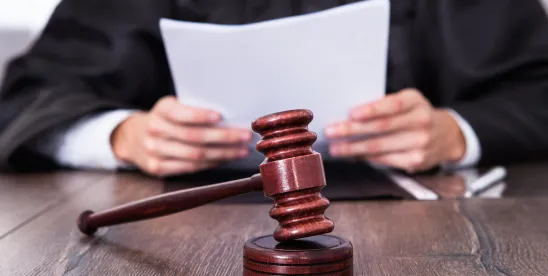The following telephone arguments will be available to the public live. Access information will be available by 9 AM ET each day of argument at: http://www.cafc.uscourts.gov/public-access-arguments.
Monday, May 3, 2021
Mobility Workx, LLC v. Unified Patents, LLC, No. 20-1441
In 2017, Mobility Workx sued T-Mobile and Verizon Wireless in the Eastern District of Texas asserting U.S. Patent No. 8,213,417 (the “’417 patent”). In June 2018, Unified Patents petitioned for IPR challenging claims 1-7 of the ’417 patent. The PTAB instituted review. The PTAB issued a Final Written Decision holding claims 1, 2, 4, 5, and 7 unpatentable.
On appeal, Mobility argues that the PTAB’s implementation of the America Invents Act (“AIA”) violates the Due Process Clause of the Constitution and the Administrative Procedures Act (“APA”). According to Mobility, the Due Process Clause entitles a party to an impartial and disinterested tribunal, but several aspects of the PTAB’s organization—including its leadership structure, decision-making process, fee structure, and administrative patent judge (“APJ”) compensation scheme—create a structural bias in the PTAB. Moreover, Mobility argues, the remedy from Arthrex making the APJs terminable at will only heightens the structural bias. Mobility also argues that the Director’s delegation of his authority to unconstitutionally appointed APJs to make final, unreviewable institution decisions violates the APA. Finally, Mobility argues that subjecting a pre-AIA patent, like the ’417 patent, to an AIA IPR proceeding constitutes an unlawful taking of property. According to Mobility, the retrospective application of the IPR proceeding undermines the reasonable investment-backed expectations of a patent owner.
Unified responds that Mobility’s arguments were not raised before the PTAB and therefore have been waived. If the Court does consider these arguments, Unified argues, the Court has previously considered and rejected these same contentions.
Then-Director Iancu intervened, defending the PTAB’s organization and agreeing with Unified that Mobility forfeited its challenges by failing to raise them before the PTAB. An amicus brief has also been filed by US Inventor, Inc. in support of Mobility and specifically highlighting the PTAB’s compensation scheme and performance rating system for APJs.
Tuesday, May 4, 2021
Qualcomm Incorporated v. Apple Inc., No. 20-1558
Apple petitioned for IPR of U.S. Patent No. 8,063,674 (the “’674 patent”). The PTAB instituted review and held the challenged claims unpatentable based on a combination of applicant-admitted prior art (“AAPA”) and another reference. During the IPR, Qualcomm conceded that the combination teaches all elements of the challenged independent claims, but argued that, as a matter of law, AAPA from a patent’s specification should not be eligible for use in IPR proceedings. The PTAB rejected Qualcomm’s argument.
On appeal, Qualcomm argues AAPA from a patent’s specification cannot be relied on in an IPR proceeding, even in combination with other prior art. Qualcomm points out that Section 311(b) of the AIA explicitly restricts the PTAB to holding claims unpatentable in an IPR proceeding “only on the basis of prior art consisting of patents or printed publications.” Thus, Qualcomm argues, the PTAB exceeded its statutory authority in holding the challenged claims of the ’674 patent unpatentable based on disclosures in the ’674 patent itself.
Apple responds that the statutory language permits grounds based on “prior art consisting of patents,” and the AAPA from the ’674 patent is literally prior art consisting of (i.e., in the form of) a patent. Apple emphasizes the Patent Office’s “long history” of considering AAPA in analyzing obviousness, including during reexamination proceedings governed by identical statutory language.
After both parties’ principal briefs were filed, the Director issued binding agency guidance setting forth the Director’s interpretation of Section 311(b) on this issue. The Director construed Section 311(b)’s reference to “prior art consisting of patents or printed publications” to exclude AAPA from the challenged patent’s specification. The guidance prescribes that “the challenged patent itself, or any statements therein, cannot be the ‘basis’ of an IPR.” Citing Koninklijke Philips v. Google, however, the guidance clarified that AAPA may still have relevance in an IPR, such as when it evinces the general knowledge possessed by someone of ordinary skill in the art. Then-Director Iancu also intervened, requesting a remand of the proceedings back to the PTAB for reconsideration in view of the guidance.
Apple responds that the Director’s recently issued guidance has no impact on this appeal because it presents a flawed interpretation of Section 311(b) and is owed no deference. Even if the guidance has merit, Apple argues, its IPR satisfies the new guidance because it relies on AAPA combined with a prior art patent.
Wednesday, May 5, 2021
Deckers Outdoor Corporation v. Australian Leather Pty Ltd., No. 20-2166
Deckers Outdoor owns the UGG brand for footwear sold in the U.S. and elsewhere. UGG has been registered as a trademark in the U.S. since 1987. Deckers sued Australian Leather in 2016, asserting footwear products sold by Australian Leather in the U.S. infringed the UGG mark. Australian Leather counterclaimed, seeking a declaration that Deckers’ UGG mark is invalid as generic in the U.S. and under the doctrine of foreign equivalents through its allegedly generic use in Australia. The district court granted a motion for summary judgment filed by Deckers, concluding the relevant public is American footwear consumers generally and no reasonable factfinder could find that “ugg” is or ever was generic for sheepskin boots in the U.S., regardless of how that term is used in Australia. Australian Leather appealed.
Regarding genericness in the U.S., Australian Leather argues the district court erroneously evaluated whether “ugg” had a generic meaning prior to when its mark, UGG, was first in use. It argues the test set forth in the Lanham Act that the district court applied—which examines “the primary significance of the registered mark to the relevant public”—only applies where an already-distinctive or registered mark falls into genericness, and the statutory language, legislative history, case law, and public policy support this reading. It argues this test does not and should not apply where, as here, a term has a generic meaning before being used as a mark. Instead, it argues the court should look to previous cases and “simply determin[e] whether a generic meaning of the relevant term existed.”
Regarding the doctrine of foreign equivalents, Australian Leather argues the district court erred in holding that the doctrine of foreign equivalents does not apply where the primary language in a foreign country is English. It argues the doctrine itself does not exclude English-speaking foreign countries, and the policy rationales behind the doctrine apply at least equally, if not more strongly, in such countries. Australian Leather emphasizes that there is no controlling authority supporting the district court’s holding.
Regarding genericness in the U.S., Deckers responds that the district court applied the correct test. It argues the Seventh Circuit has held that the same test applies whether the mark allegedly “was generic at the outset or has become so through use.” Deckers cites the recent Supreme Court ruling in United States Patent and Trademark Office v. Booking.com B. V., which rejected the same argument. Regarding the doctrine of foreign equivalents, Deckers argues the doctrine does not apply where, as here, there is no translation for the term. In the alternative, Deckers argues that, even if the doctrine does apply, the district court correctly focused it analysis on American footwear consumers, not Australian.
Friday, May 7, 2021
SPIP Litigation Group, LLC v. Apple Inc., No. 20-1962
After SPIP Litigation Group (“Straight Path”) asserted four patents against Apple and Cisco in the Northern District of California, Apple and Cisco initiated IPR challenges to the patents. Straight Path dismissed the district court actions without prejudice. The PTAB initially held the challenged claims unpatentable, but the Federal Circuit reversed and remanded, holding the PTAB’s construction of the claim term “is connected” was erroneously broad. On remand, the PTAB applied the Federal Circuit’s narrower construction of “is connected” to uphold the challenged claims.
Thereafter, Straight Path refiled district court actions against Apple and Cisco. After the parties stipulated to the Federal Circuit’s construction of “is connected,” the district court granted summary judgment of non-infringement. Straight Path appealed, asserting the ruling was inconsistent with the Federal Circuit’s construction, but the Federal Circuit summarily affirmed.
Apple and Cisco then brought motions for attorney fees under 35 U.S.C. § 285. Finding the cases exceptional, the district court granted attorney fees to both. Straight Path appealed.
Straight Path argues that the cases are not exceptional because, in granting summary judgment of non-infringement, the district court clarified the stipulated construction of “is connected.” It argues Biax Corp. v. Nvidia Corp. held a case is not exceptional where, as here, a plaintiff asserts infringement under a claim construction and the district court clarifies or modifies that construction in granting summary judgment of non-infringement. Under Biax, Straight Path argues, the district court abused its discretion by granting the motion for attorney fees. According to Straight Path, its view of infringement was “objectively reasonable” under the stipulated construction.
Cisco responds that Straight Path took infringement positions that directly contradicted the validity arguments it presented during the IPR proceedings, which is sufficient to make the cases exceptional under Section 285. Cisco argues the district court did not clarify or modify the stipulated construction in granting summary judgment. Rather, Cisco argues, the district court relied on Straight Path’s own statements to show inconsistencies between its infringement and validity positions. Additionally, Cisco highlights that an award of attorney fees is reviewed for an abuse of discretion and is not easily disturbed.
Bot M8 LLC v. Sony Corporation of America, No. 20-2218
Bot M8 sued Sony in the Southern District of New York, asserting infringement of six patents. After Sony answered Bot’s complaint, the case was transferred to the Northern District of California. The Northern District of California (“the district court”) sua sponte ordered Bot to file an amended complaint, requiring Bot to include proof of infringement in the amended complaint in the form of claim charts. After Bot filed an amended complaint including infringement claim charts, Sony moved to dismiss for failure to state a claim. The district court granted Sony’s motion as to four of the patents. Bot sought leave to file an amended complaint, which the district court denied.
On appeal, Bot argues that the district court erred in sua sponte ordering it to file the amended complaint. It points out that Sony never objected to the sufficiency of Bot’s complaint and had already answered the complaint before the district court’s order. Bot also challenges the district court’s finding that its amended complaint failed to state a claim for patent infringement. According to Bot, the amended complaint included more than 200 pages of infringement analysis and claim charts and was sufficient to state a claim under Ashcroft v. Iqbal. Finally, Bot asserts the district court abused its discretion by denying Bot’s motion for leave to amend its complaint, arguing that motion was necessitated by the district court requiring evidence of infringement that far exceeded Iqbal’s pleading standard.
Sony responds that the district court’s analysis identified fundamental defects in Bot’s assertions of infringement, and these defects resulted in a failure to plead factual allegations supporting plausible infringement. Sony points out that Bot does not dispute the district court’s analysis, instead advocating for loose pleading standards that the Supreme Court has rejected. Sony also asserts that Bot waived its arguments by responding to the district court’s order without objection. Finally, Sony argues the district court properly denied leave to file a second amended complaint because Bot was not sufficiently diligent, waiting to raise its concerns until after the Rule 16 deadline to amend.





 />i
/>i

